Nestled in the heart of Assynt, northwest Scotland, Canisp is a mountain of unexpected encounters. The meaning of its name has been lost in antiquity, though it may stem from the old Gaelic word can meaning ‘white’ – the white mountain. This could refer to the outcrops of Cambrian quartzite found here, giving it a pale, greyish hue. Assynt is my favourite place for hills in Scotland. Its remoteness, fascinating geology and distinctively shaped mountains make it a hillwalker’s dream. The region is known for its ‘cnoc-and-lochan’ landscape – hundreds of rocky hillocks scattered among small, glittering lochs. The name Assynt may derive from Old Norse meaning ‘rocky ridge’.
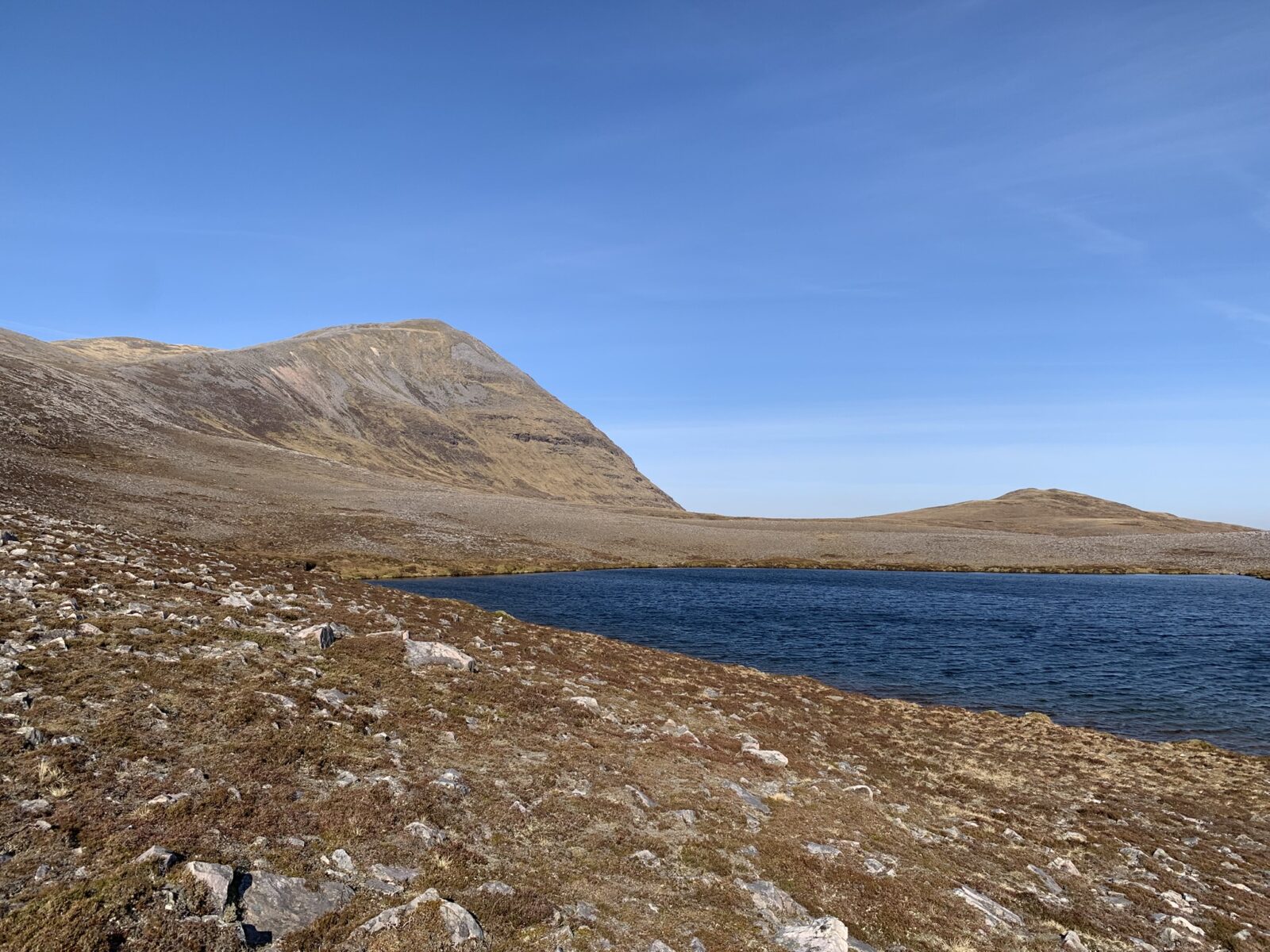
My favourite mountain in Scotland can be found in Assynt – Suilven. However, I’ve never actually been up it. I’m saving it by doing all of the surrounding hills first. Then, when I’ve earned the full panorama, I’ll finally summit it. Suilven has one of the most distinctive shapes of any mountain in Scotland, and Canisp gave me the best views of it that I’ve ever seen. Suilven comes from the Old Norse súla fjell meaning “pillar mountain” and you can see why. It is made up of highly eroded pillars of Torridonian sandstone which would have been carved by glaciers during the last Ice Age. It is now an inselberg – an isolated rocky hill that rises abruptly from the surrounding land.
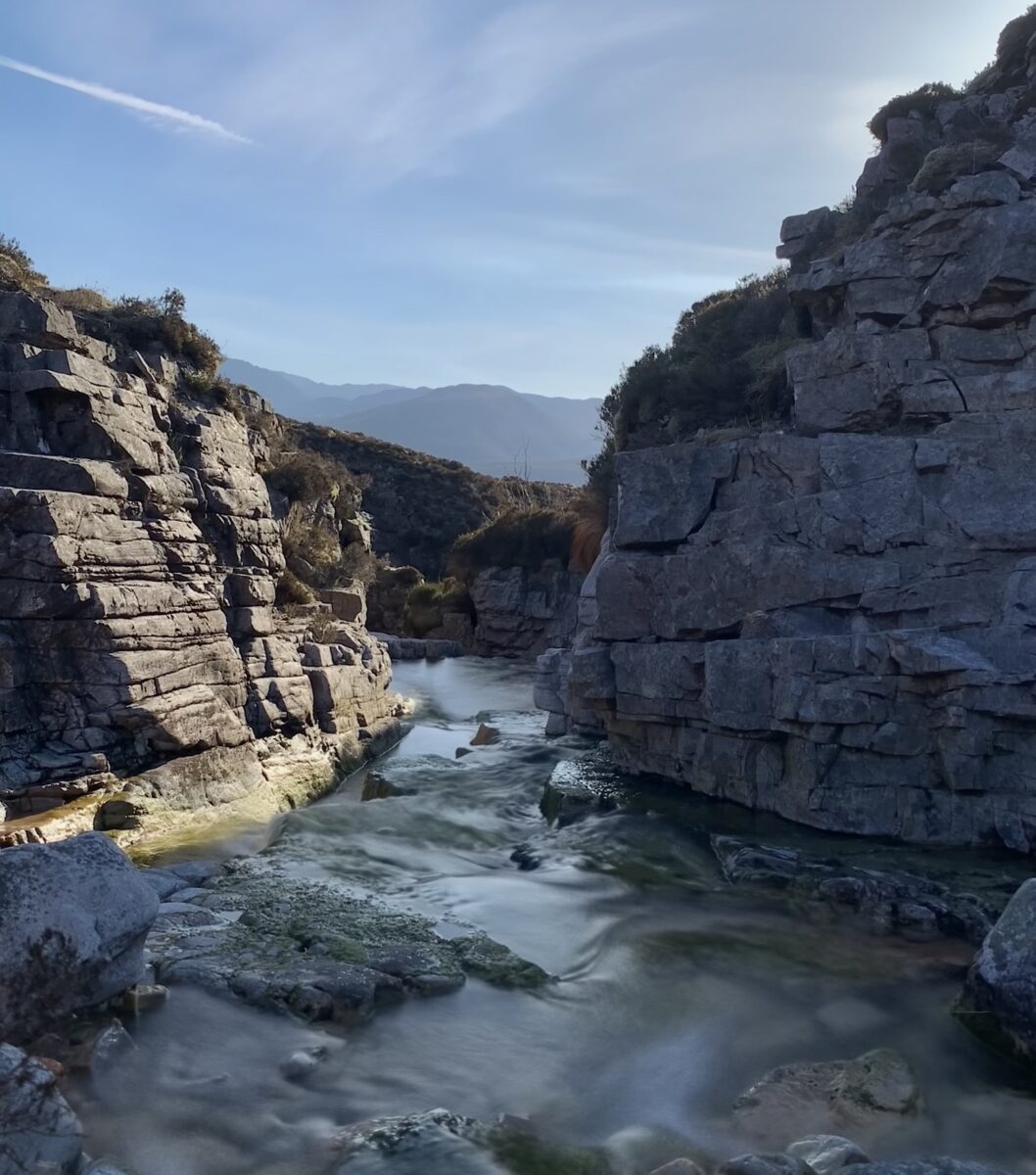
I began my journey nice and early to beat the sun and to ensure I had the mountain all to myself. It was an unseasonally warm April morning. I arrived at Loch Awe and started my ascent. I was quickly greeted by the mournful calls of golden plover which breed on the moorland. Their chicks look exactly like balls of moss, perfectly adapted to camouflage in this landscape. I followed the course of a river upstream – specifically Allt Mhic Mhurchaidh Ghèir. This was a stunning river with multiple waterfalls that had carved out a gorge in the Cambrian quartzite. By the rocky banks I found a lizard basking in the sun. Its scales formed a mosaic of black, gold and green. I followed its example and also took a moment to bathe in the sun’s powerful rays.

After a moment of peaceful contemplation by the riverside, I pressed on. I was starting to ascend more suddenly now and must have startled a pair of red grouse as they burst from the heather and took flight. So far, the wind had been quite tame, but once I reached the ridge I was blasted by air blown from the southwest. As I regained my balance, I noticed a resilient male wheatear perched on a rock, seemingly unfazed by the gale. He must have arrived in the past few days from a trip much longer and more arduous than mine. Wheatears spend the winter in Sub-Saharan Africa where the climate is much more forgiving. It’s a treacherous journey over sand, sea and mountains. The wheatears found in Alaska make the longest migration of any songbird, travelling up to 30,000km every year! Seeing one here as I was battling the wind was a humbling moment.
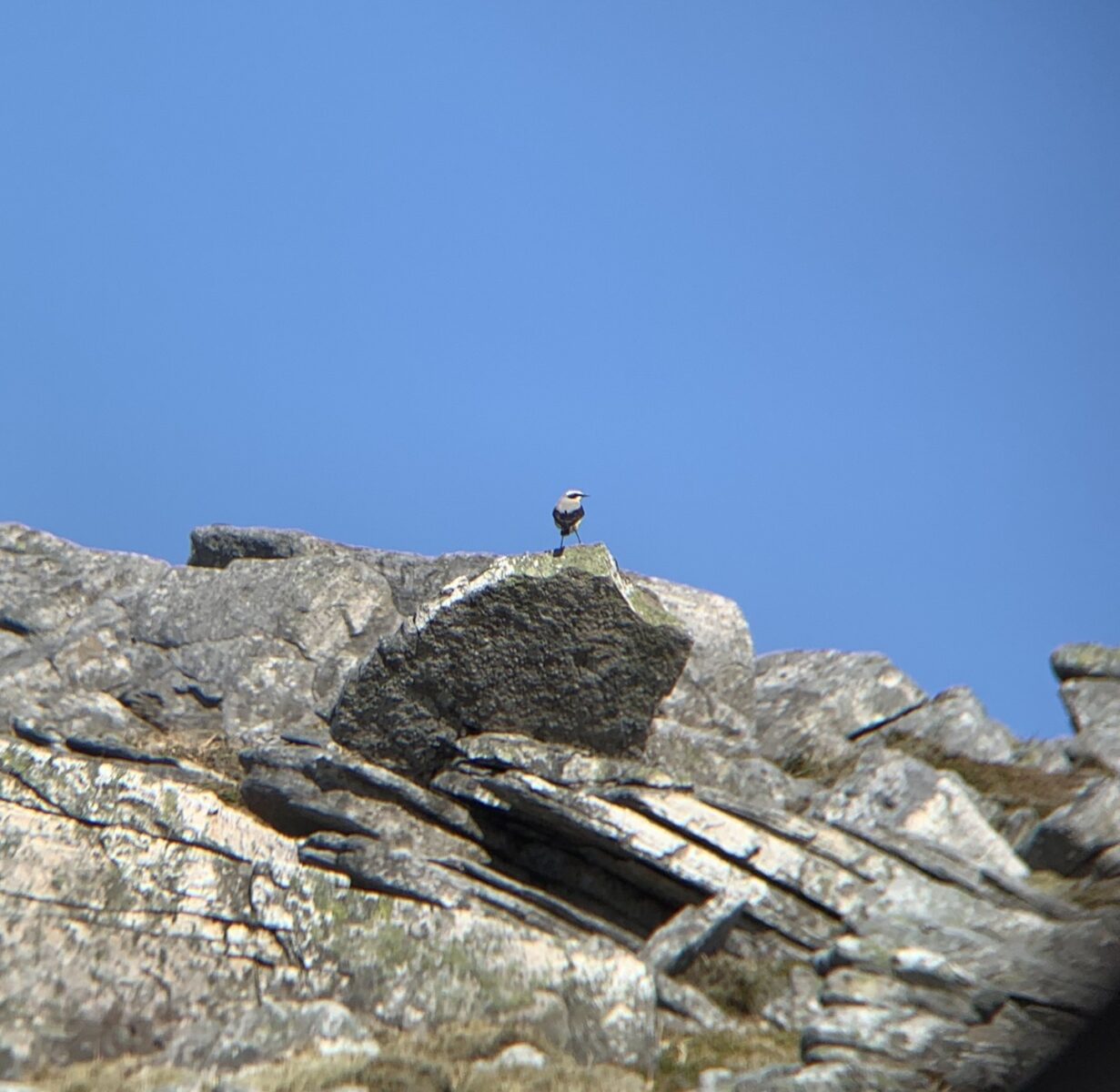
Now that I was on the ridge, there was a clear route to the summit. After passing a couple more wheatears and singing meadow pipits I had made it. The views did not disappoint. To the west, Suilven rose like a citadel, magnificent beneath a nearly cloudless sky. It was a magical moment. I soaked in the landscape, letting the moment linger. However, the wind was still unforgiving, so I found a rocky hollow for shelter and sat down to enjoy my lunch. To the north I could see Quinag, a hill that I have yet to climb but is now on my radar. As I finished eating and took a final, lingering look at Suilven, I began my descent.
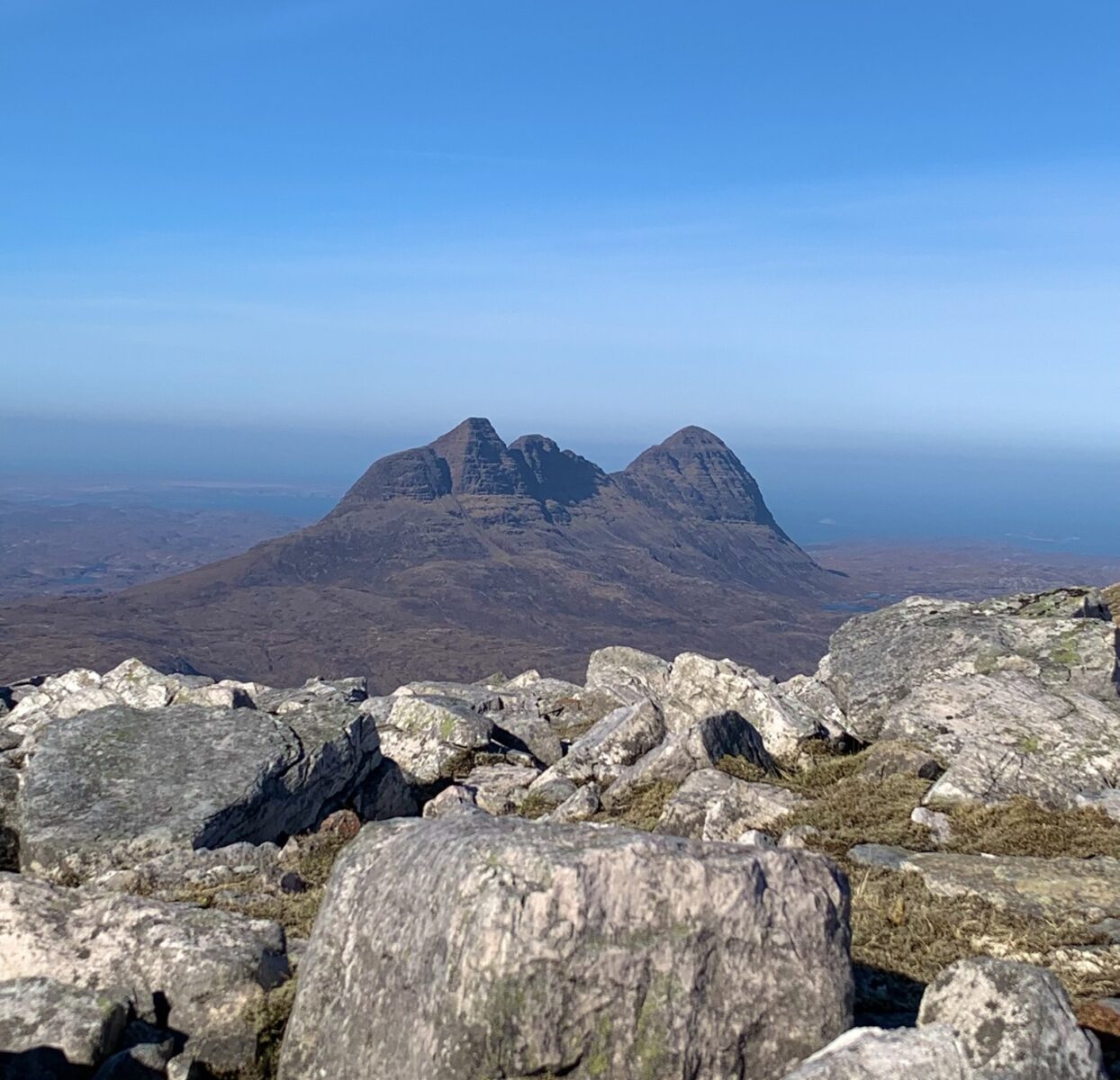
I went a slightly different route on the way down to see what other wildlife I could find. This turned out to be a great idea because it wasn’t long before I stumbled upon a pair of ptarmigan. The male saw me first and alerted the female with his harsh, chicken-like calls. But after a few minutes they had settled again and were foraging just a few metres from me. Sitting quietly, watching them go about their lives, I felt a deep sense of contentment settle over me like a mist.
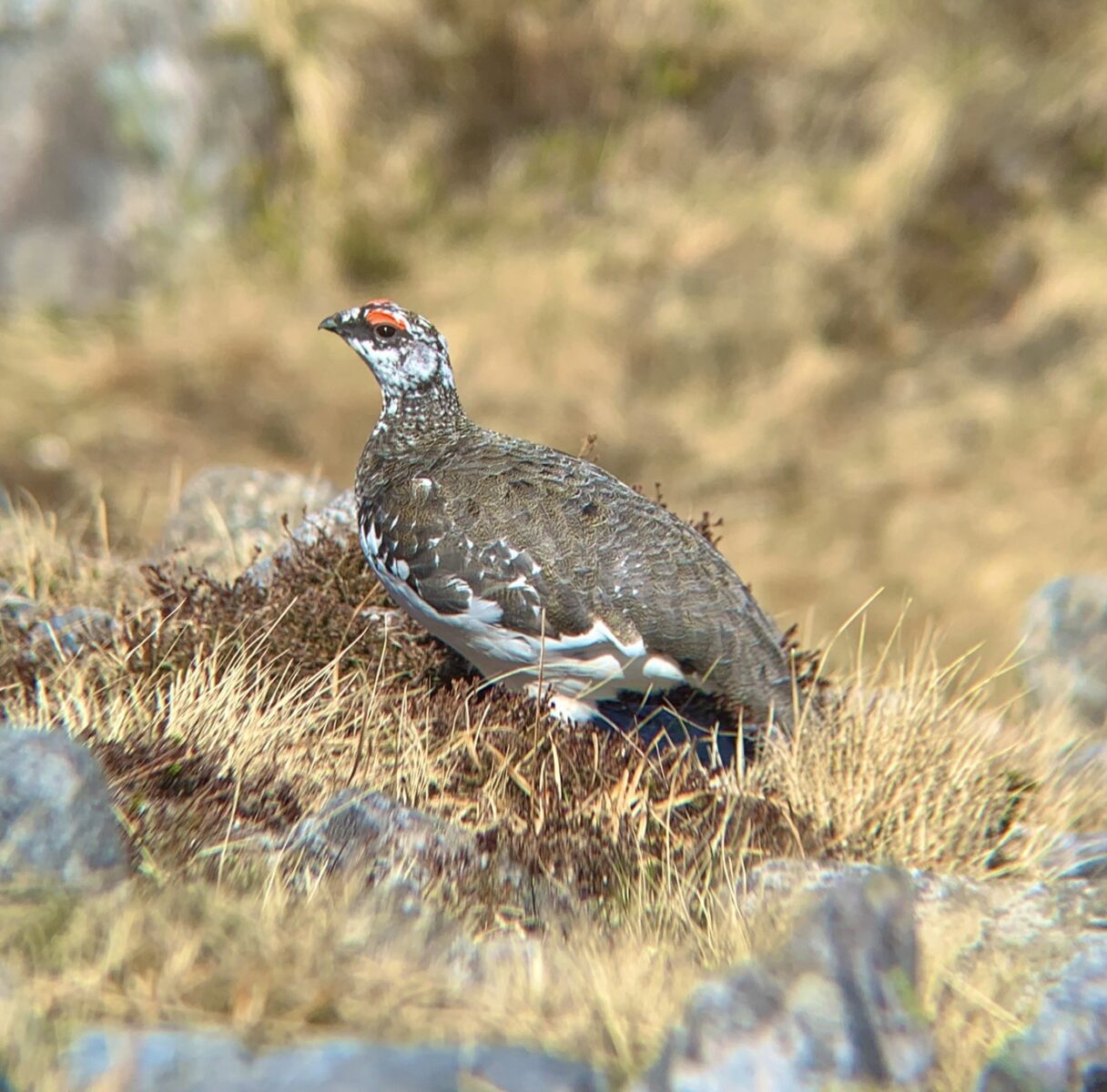
After what must have been about half an hour, I left the ptarmigan in peace and made my way back to the starting point. Just before reaching my car I spotted a large orange insect flying beside me – an emperor moth! It was the first one I had seen this year, a sure sign that spring was on its way. It followed me to my car and kindly settled right beside me, allowing me to appreciate its splendour. What a perfect day. I began the long drive home, the landscape slipping past like a half-remembered dream. And through it all, Suilven stayed with me—a distant silhouette etched into memory, calling softly from the horizon. One day, I will answer.
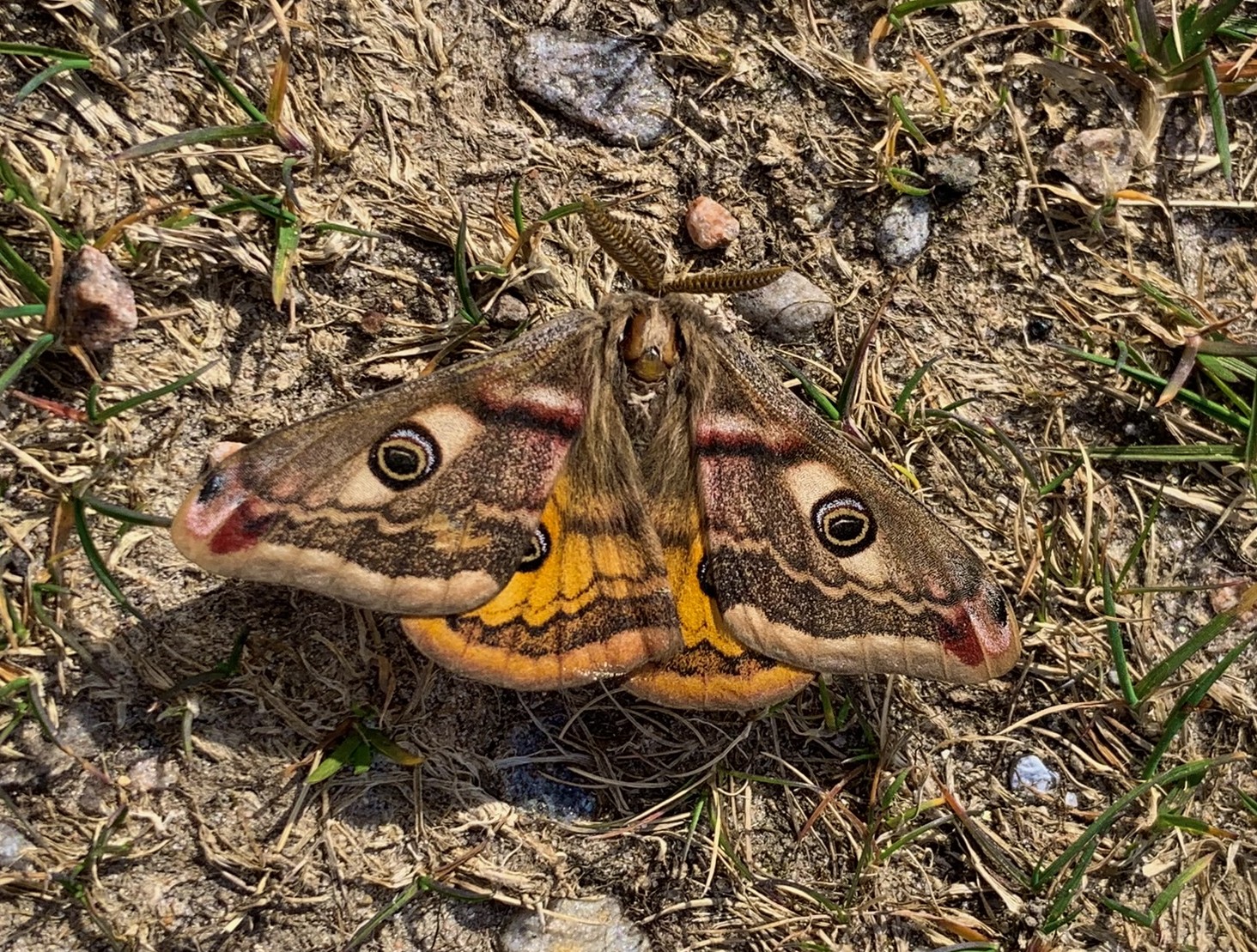
by Ewan Fenelon


